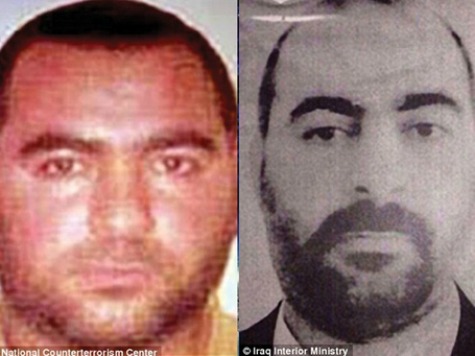Abu Bakr al-Baghdadi is the leader of the Islamic State of Iraq and the Levant, (ISIL) the group that has been described by some as “worse” and “more reckless” than Al Qaeda itself. Some see al-Baghdadi as a threat comparable to “the next Osama bin Laden.” On Friday, his ISIL group proudly announced it had executed approximately 1,700 Shia Iraqi soldiers.
What is known about al-Baghdadi, born in 1971 in the city of Samarra, Iraq, comes mostly from jihadist websites. He reportedly grew up in a very religious family and earned a doctorate degree in education from the University of Baghdad. Many conflicting reports document his radicalization process. Some say he found his Al Qaeda-like sentiments during Saddam Hussein’s rise to power. Others say his four years under guard at the U.S.-run Camp Bucca detention facility after his arrest by U.S. forces in 2006 is largely to blame for his underlying views.
There is much mystery behind the ISIL leader, as only two official photos of al-Baghdadi actually exist. He is known to keep a low-profile–not one to be in the front and center for bin Laden-like videotape pronouncements. Al-Baghdadi is known as more of a behind-the-scenes tactician than an overt rabble-rouser. The ISIL commander addresses his comrades while wearing a mask. Al-Baghdadi’s methodology has earned him the nickname “the invisible sheikh.” He now commands an estimated 7,000 fighters under the banner of the Islamic State of Iraq and the Levant.
He initially came to the forefront of the public’s attention in 2011 in the aftermath of the ousting of Osama bin Laden by U.S. Special Forces. Shortly thereafter, ISIL pledged on its website to carry out 100 attacks in Iraq to retaliate for the death of bin Laden.
In 2011, the State Department announced a ten million dollar bounty reward for the death or capture of al-Baghdadi.
In April 2013, the Al Qaeda splinter leader announced that “the group was operating in Syria and changed its name to the Islamic State of Iraq and the Levant.” By including the Levant Mediterranean region to the name of his Sharia-seeking group, one could argue al-Baghdadi added several countries to his jihadi hit list, including Syria, Jordan, Lebanon, Turkey, Israel, and the Palestinian territories.
In 2013, Baghdadi reportedly clashed with Al Qaeda leader Ayman al-Zawahiri. Many believe the ISIL leader was pushed out of Al Qaeda because of the ruthless methods of carrying out his jihadist ambitions. Others say the differences between the two groups are simply a change in leadership style and operational structure. Some argue that his willingness to also kill Sunni Muslims is what upset Al Qaeda leaders most.
Many see al-Baghdadi as the rightful heir to the jihadi throne of bin Laden. An ISIL fighter told Reuters, “Sheikh Baghdadi and Sheikh Osama are similar. They always look ahead, they both seek an Islamic state.”

COMMENTS
Please let us know if you're having issues with commenting.